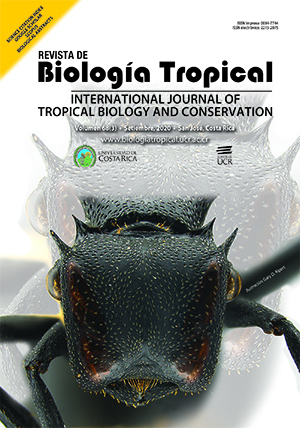Abstract
Introduction: Recognition of the variety of ecosystem services that biodiversity performs in agroecosystems is one of the basic principles of agroecology. Because indices of functional diversity may be directly related with ecosystem services, an assessment of functional diversity can be useful for evaluating ecosystem services provided under agroecological management. Objective: We compared functional diversity of birds found in rice fields under conventional and agroecological management in the rice zone of Santa Fe Province, Argentina. Our objective was to determine whether agroecological management of rice is associated with a higher functional diversity and a different functional composition of birds than conventional management. Methods: We surveyed birds eight times, roughly every 15 days between November 2017 and March 2018, from beginning of sowing to before harvest, in both types of rice fields. Birds were sampled by a combined technique of line transects and point counts at four sites in each type of management. We calculated indices of functional diversity and composition based on morphologic and trophic attributes of birds detected in each type of field. Results: Functional richness, divergence and dispersion were higher under agroecological management. Only differences in functional richness between managements reflected differences in species richness. Community-level weighted means of trait values by sample varied between management types. An insectivorous diet, pursuit as a foraging method, and air and shrubs as foraging substrates were traits best represented under agroecological management. Conclusions: Our results suggest that agroecological management of rice crops is related with a higher functional diversity of birds than conventional practices, suggesting that agroecological management may enhance the provision of ecosystem services by birds in rice agroecosystems.
##plugins.facebook.comentarios##

This work is licensed under a Creative Commons Attribution 4.0 International License.
Copyright (c) 2020 Rodrigo Ezequiel Lorenzón


